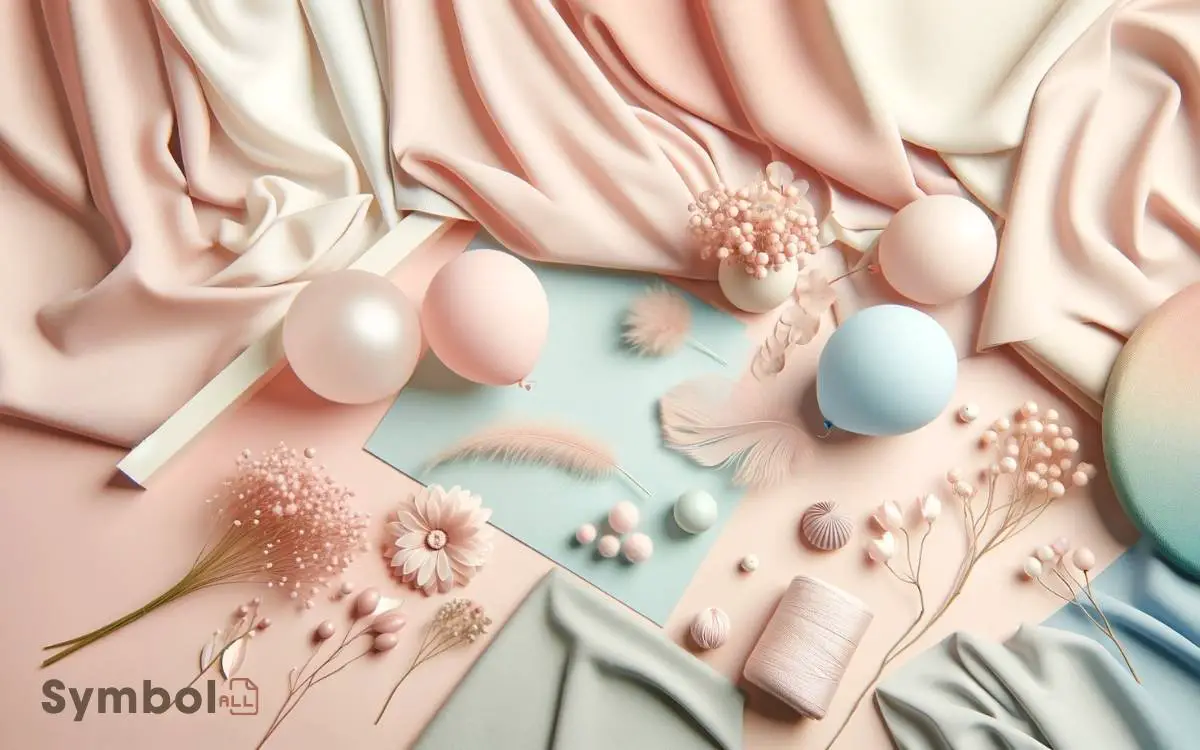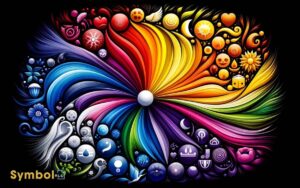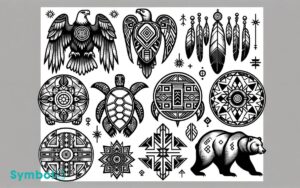What Do Pastel Colors Symbolize? Tranquility, Innocence!
Pastel colors whisper meanings of tranquility, innocence, and optimism to you. Their soft, subdued hues embody an inherent lightness and purity, offering a reflective and meditative space.
Through art, design, and culture, they suggest serenity and calm, providing insights into deeper thematic undertones.
These colors don’t just beautify; they manifest mindfulness, reduce stress, and encourage communication, painting a landscape of emotional and psychological well-being.
In fashion, they signal calmness and sophistication; in branding, they foster emotional connections, setting entities apart in crowded markets.
Understanding their full depth reveals how they shape perceptions, emotions, and cultural narratives. Discovering their multifaceted roles unfolds a rich tapestry of significance.

Key Takeaway
The Essence of Pastel Colors
In light of this, pastel colors, with their soft and subdued hues, evoke a sense of calm and serenity, embodying the gentle side of nature’s palette.
You’ll find that these hues possess an inherent lightness and purity, often associated with the freshness of spring.
This intrinsic connection to nature’s rebirth and renewal provides a psychological solace, making pastel colors not just aesthetically pleasing but also emotionally comforting.
Their diluted intensity offers a contrast to the vividness of fully saturated colors, creating a visual experience that’s less overwhelming and more harmonious.
This subtlety allows for a reflective and meditative space, inviting you to pause and appreciate the quieter moments.
As a result, pastels aren’t merely decorative; they’re a manifestation of tranquility and mindfulness, fostering a space of clarity and peace.
Symbolism in Art and Design
In the field of art and design, the choice of color carries profound symbolic weight, shaping perceptions and evoking specific emotional responses from the viewer.
Pastel colors, with their soft, light hues, often embody themes of tranquility, innocence, and optimism. Artists and designers leverage these colors to create a subtle yet powerful narrative within their work.
The use of pastels can suggest a sense of serenity and calmness, making them ideal for conveying messages of peace and gentleness.
Additionally, their application in a composition can provide a sense of lightness, often used to counterbalance darker themes or to highlight a contrast within the piece.
Analyzing the strategic placement and combination of pastel colors reveals an intricate layer of meaning, offering insights into the creator’s intent and the work’s deeper thematic undertones.
Cultural Interpretations
You’ll find that pastel colors carry complex meanings across cultures, reflecting diverse historical, artistic, and ritualistic perspectives.
The global interpretations of pastels offer a rich tapestry of symbolic significance, from art history to contemporary rituals.
This exploration underscores the nuanced roles pastels play, revealing their capacity to communicate beyond mere aesthetic appeal.
Global Meanings of Pastels
Across cultures, pastel colors carry diverse symbolic meanings that reflect societal values, traditions, and emotional states.
You’ll find that these soft hues aren’t just visually appealing; they’re imbued with deep cultural significances that vary from one region to another.
Consider how pastel colors are perceived across different societies:
| Culture | Meaning |
|---|---|
| Western | Often associated with spring, youth, and health. |
| Japanese | Symbolize natural beauty and subtlety, with cherry blossoms (sakura) embodying transient life. |
| Indian | Used in festivals to represent joy, but also have connotations of cleanliness and purity. |
| Middle Eastern | Can signify peace and tranquility, often used in architecture to inspire calm. |
This brief exploration reveals how pastels serve as a canvas reflecting varied cultural narratives and emotional landscapes.
Pastels in Art History
Throughout history, artists have often employed pastel colors to convey complex cultural narratives and emotional depths, revealing their significance in various artistic movements.
In the Rococo period, pastels became emblematic of the aristocratic leisure and frivolity, with soft blues, pinks, and yellows adorning the walls of palaces and the canvases of artists like Antoine Watteau.
This choice reflected a societal shift towards lightness and elegance, distancing from the Baroque’s dramatic intensity.
Similarly, the Impressionists harnessed pastels to capture transient effects of light and atmosphere, embedding a sense of immediacy and fleeting beauty in their works.
These historical usages underscore pastels not merely as aesthetic choices but as deliberate tools for articulating the zeitgeist, embodying cultural shifts, and evoking nuanced emotional responses.
Rituals and Pastel Colors
In many cultures, pastel colors play a pivotal role in rituals, symbolizing themes of renewal, purity, and joy, and hence weaving a rich tapestry of meaning into ceremonial practices. These soft hues, often associated with springtime and new beginnings, are carefully chosen to evoke a sense of harmony and balance. For instance, teal holds a unique place within this palette, blending the calmness of blue with the revitalizing energy of green. Teal color symbolism explained highlights its representation of calm renewal and emotional healing, making it a popular choice in traditions focused on spiritual growth and inner peace.
You’ll find these hues embedded in the fabric of spring festivals, representing the awakening of nature and the promise of new beginnings.
In weddings, pastels often embody innocence and the budding of love, marking the event with a soft, romantic ambiance. Baptisms and baby showers frequently utilize pastels to denote purity and the gentle innocence of new life.
Through these rituals, pastels communicate a language of softness and subtlety, influencing participants’ emotions and reinforcing the significance of the occasion.
This nuanced use of color highlights the depth of human cultural expressions, demonstrating how visual elements can deeply resonate within our collective psyche.
Emotional and Psychological Effects
Pastel colors often evoke a sense of calm and relaxation in the viewer, subtly influencing emotional and psychological states.
These hues carry a soft, light energy that can alter your mood and perception in various ways:
- Promote mindfulness: Pastels can help center your thoughts, encouraging a mindful presence.
- Reduce stress: Their soothing nature can decrease stress levels, offering a sense of tranquility.
- Enhance creativity: Light, airy colors may stimulate your creative thinking, opening up new possibilities.
- Boost mood: Pastels are known to uplift spirits, making you feel more optimistic.
- Encourage communication: Soft colors can facilitate open, gentle communication, making them ideal for spaces designed for discussion.
Understanding the emotional and psychological impacts of pastel colors can help you harness their benefits more effectively in your daily life.
Pastels in Fashion Industry
The fashion industry has embraced the allure of pastel colors, leveraging their subtle charm to redefine style and seasonal trends.
Designers have masterfully utilized pastels to evoke a sense of calmness and sophistication, subtly breaking the monotony with hues that whisper rather than shout.
This strategic use of color palette not only aligns with the psychological impacts discussed earlier but also positions pastels as a versatile choice across collections, reflecting both innovation and a nod to nostalgic elements.
| Year | Trending Pastel |
|---|---|
| 2018 | Lavender |
| 2019 | Mint Green |
| 2020 | Sky Blue |
| 2021 | Soft Peach |
| 2022 | Pale Yellow |
In this light, pastels serve as a canvas for expression, allowing designers to craft pieces that are both timeless and timely, appealing to a discerning audience that values subtlety and depth in their sartorial choices.
Representation in Celebrations
Celebrations harness the emotional resonance of pastel hues to cultivate a thematic atmosphere that’s both inviting and distinctly memorable.
Pastel colors offer a canvas of sophistication and subtlety, reflecting the nuanced emotions and themes of various celebrations.
They’re not just visually appealing; they carry symbolic meanings that enhance the experience of the event.
- Weddings: Symbolize new beginnings, purity, and love.
- Baby showers: Evoke gentleness, innocence, and the softness associated with newborns.
- Easter: Represent renewal, life, and spring’s delicate awakening.
- Mother’s Day: Convey appreciation and the tender bonds of family.
- Spring festivals: Capture the essence of rebirth, growth, and the gentle passage from winter.
In this context, pastel colors don’t just decorate; they communicate, setting a tone that aligns with the spirit of the celebration.
Influence on Brand Identity
You’ll find that pastel colors play a pivotal role in shaping brand identity by enhancing brand perception and fostering emotional connections.
These soft hues can subtly influence consumer behavior, making them more likely to engage with a brand on a deeper level.
As such, understanding the psychological impact of pastel colors is essential for marketers aiming to create a memorable and positive brand image.
Brand Perception Enhancement
Incorporating pastel colors into a brand’s visual identity can greatly enhance consumer perception and foster a distinctive brand identity.
These subdued hues can subtly influence how potential customers view and engage with a brand.
- Uniqueness: Pastel colors can set a brand apart in a crowded market, offering a soft, yet memorable visual experience.
- Modern Appeal: They’re often associated with modernity and innovation, attracting a forward-thinking audience.
- Versatility: Pastels work well across various platforms and materials, ensuring consistent brand presentation.
- Perceived Quality: Light, soft colors can convey sophistication and a higher perceived value.
- Market Positioning: Using pastels can position a brand as approachable and relatable, without compromising on professionalism.
Emotional Connection Building
Pastel colors possess the subtle power to forge a deep emotional connection between a brand and its audience, transforming mere recognition into lasting loyalty.
These hues, with their soft and inviting demeanor, communicate warmth, tranquility, and approachability, encouraging consumers to perceive a brand as friendly and reliable.
This emotional resonance is vital for building brand identity in a crowded marketplace, where differentiation is key.
By consistently employing pastels in visual branding elements, you’re not just creating a unique aesthetic; you’re embedding your brand in the emotional landscape of your audience’s lives.
This strategy extends beyond mere visual appeal, tapping into psychological responses to color that drive consumer behavior.
Essentially, pastels can subtly influence how your brand is felt and remembered, making them a powerful tool in establishing a lasting emotional connection.
Pastels in Modern Media
Modern media frequently employs pastel colors to evoke specific emotional responses and thematic undertones, revealing the nuanced role these hues play in visual storytelling.
You’ll notice that:
- Pastels often signify innocence and purity, making them a staple in narratives focusing on youth and new beginnings.
- They’re used to create a sense of calm and relaxation, ideal for scenes meant to soothe the viewer.
- In contrast, pastels can also underscore vulnerability or fragility, adding depth to character development.
- These colors serve to distinguish time periods, with pastels evoking a nostalgic feel for the mid-20th century.
- Filmmakers and graphic designers utilize pastels to construct a visually cohesive aesthetic, enhancing the overall narrative coherence.
This strategic use of pastel colors demonstrates their power in enhancing storytelling through visual cues.
Conclusion
In wrapping up, pastels serve as the whispers in a world shouting with color, subtly influencing emotions, cultures, and industries alike. Like a gentle dawn heralding a new day, they bring a sense of calm, purity, and renewal.
Through their soft hues, pastels not only shape fashion trends and brand identities but also deeply resonate on an emotional and psychological level.
Their quiet presence in art, design, and celebrations speaks volumes, proving that sometimes, less is indeed more.






